Hayden Shamel feels mentally exhausted.
Shamel, a high school teacher in Hot Springs, routinely works through her lunch period. She takes her work home at night and on weekends to video-record lessons, grade assignments and answer emails.
She has 147 students in her two English classes and four Spanish classes at Lakeside High School. Roughly one-fourth of her students are doing school online.
Catering to the needs of both her in-person and her online students is like performing two jobs.
She's not alone. Many public school teachers across Arkansas are struggling in a situation caused by the covid-19 pandemic, Shamel said.
"It's very, very hard," she said. "I had a teacher tell me this afternoon, 'I don't know how I'm going to be able to keep this up.' This was a veteran teacher."
[CORONAVIRUS: Click here for our complete coverage » arkansasonline.com/coronavirus]
The pandemic has forced teachers to adjust, from wearing a mask in class to ensuring desks and other surfaces in their classrooms are regularly disinfected. Surfaces in upper grade levels must be cleaned between each class period. Teachers also are maintaining records of seating charts in case contact tracing is necessary.
They've had to adapt quickly to digital programs and platforms that become mandatory for the job. Many are still struggling with how best to simultaneously provide in-person and online education.
The quality of education suffers for both online and in-person students, teachers said. Educators find it difficult to relate and communicate with students via computer screen, they said.
Masks worn by students and teachers hinder communication for even the in-person learners, teachers said.
"I think a teacher motto is, 'we can do anything for a year,'" said Holly Howard, chairwoman of the English department at Bentonville High School.
[Click here for more photos » arkansasonline.com/1025campaign/]
Teachers noted that the pandemic guidelines have prompted many students to be more responsible for their health and the health of others, and sharpened focus and listening skills. Districts also have been more open and innovative on ways to help the teachers' workloads, teachers said.
Howard noted another helpful takeaway: Her handle on technology has improved.
"I used to pride myself on that at the beginning of my career, but the older I get, the less I keep up with some of these tools, and this is forcing me to do that," she said.
The extra work occurs in the stressful context of a virus pandemic that, two months into this school year, has infected 2,032 faculty and staff members, and 5,389 students in K-12 public schools statewide as of Thursday, according to the Arkansas Department of Health.
Six public school employees in the state, including two teachers, have died from covid-19.
TWO JOBS IN ONE
Most teachers, administrators and other close observers of education agree that the biggest source of stress for teachers is having to teach in-person and virtual students at the same time.
Teachers are "essentially working two jobs," said Carol Fleming, president of the Arkansas Education Association, the state's largest professional organization for educators and support staffers.
Glen Fenter, superintendent of the Marion School District in east Arkansas, sees the frustration.
"It's very time consuming and certainly a big departure from what the norm has been," Fenter said.
Some school districts are appropriately staffed and equipped to have separate sets of teachers doing either in-person instruction or online.
"The vast majority of school districts in the state don't fit that category," Fenter said.
Michele Linch, executive director of the Arkansas State Teachers Association, takes a different view. She believes districts of all shapes and sizes could do it if they tried, she said.
Linch said the experience of teachers this school year comes down to the leadership capacity within their school districts. She could predict which districts were going to fare well and which ones wouldn't, based on what she knew about the administration of each one, she said.
Having teachers instruct in-person and online students simultaneously isn't sustainable, she said.
"And they're doing it, but they're upset because they know that neither group of students is being served well," Linch said.
[COVID CLASSROOM: Read more stories from this series » arkansasonline.com/covidclassroom]
Arkansas' elementary and secondary schools received $128.8 million through the federal Coronavirus Aid, Relief, and Economic Security Act. Some districts used some of the money to hire additional support staff to cover duties such as lunch and recess supervision to give teachers extra planning time, Linch said.
"So it upsets me when I hear of teachers who aren't even being given their 30-minute lunch. Because I know all over the state there are districts able to do that," she said.
OTHER CHALLENGES
Kim Trujillo teaches seventh grade English at Clinton Junior High School in north-central Arkansas. Addressing students while wearing a mask is hard, so on the weekends, she records videos of herself giving lessons, videos that she then shows to her virtual and in-person students.
"That saves me from having to talk all day with a mask on. I lose my voice by about the third hour if I do," she said.
Trujillo, now in her 29th year in education, said she's putting in at least 55 hours of work per week, about 10 more than was typical for her in past years.
The constant flux of students going from the in-person to online school models -- some of whom have had to be quarantined -- adds to the challenge, she said. She feels like she spends half her time tracking attendance, trying to figure out who's supposed to be in her classroom, who's not supposed to be there and why.
She must keep online and in-person students on the same track lesson-wise. That can be tricky.
One day, for example, her in-person students weren't able to finish a particular assignment, and it was continued until the next week. Meanwhile, 10 of her online students finished it and were ready to move on.
"It becomes a mess some days," she said. "It's really hard just keeping up with all of that in your head. We're good at multitasking, but this is like, above and beyond. You just go home some days and cry because you're so overwhelmed with thinking."
Trujillo said she's not contemplating quitting, but, "I have heard two teachers say, 'If I could, I would.'"
Howard, the Bentonville High School teacher, teaches five sections of 11th grade English, all online. She works in a room with three other English teachers who also teach all online, an arrangement they jokingly call the English call center.
"I think as teachers, and especially as English teachers, we want to teach so that we can talk to kids, we want to hear from kids, we want kids to learn to relate to each other. And all that is pretty much absent in the virtual setting," she said.
Some kids are reluctant to turn on cameras or microphones, so it's a struggle to form connections with students, and for students to connect with one another. Six weeks into the semester, when grading papers, she sees students' name and tries to conjure their faces, she said.
"I don't know who they are or what they look like or what their story is, and so much of that is important when you're trying to teach a kid. The human element is missing," Howard said.
TRYING TO HELP
Jay Chalk, superintendent of the Clinton School District, knows as well as any administrator the pressure on teachers.
"I know how overworked and stressed they are. I can feel it. Plus, I hear it every day. My wife teaches here," he said. "But I would hope they know we hear them and care for them as a staff."
The parking lots at many school buildings are half full on Sundays, he said, unlike the two or three cars in past years, he said.
Clinton administrators gathered about a month ago to brainstorm about what they could do to help teachers.
Administrators at the elementary school added a 45-minute preparation period to the workweek for teachers. Nonteaching staff members cover for them during that time. The staffers also cover teachers' afternoon recess for them, said Assistant Principal Audra Smith.
Fleming said communication is key. The state has personal protection equipment available for school districts, but the association continues to hear from educators throughout the state that they don't have enough of it, she said.
Tally Thornton, a science teacher at Courtway Middle School in Conway, said administrators at her school step in and serve as substitute teachers when necessary.
"There was one day when they told the teachers, 'No recess duty today, you guys stay inside and work.' It's those little things that give you an extra 15 or 20 minutes where you can battle through technology that takes three times as long to do what you normally can do in the blink of an eye," Thornton said.
Numerous school districts are adopting a virtual "flex" day per week, or an early-release day, for students to get caught up and for teachers to plan and catch up on their work. Conway instituted such a schedule this month with "blended Fridays." All students have the option of learning either from home or at school on Fridays, and teachers are not covering new material on those days.
The change has "helped a lot with the stress level on everyone's part," Thornton said.
Tiffany Hamilton, a television production teacher at Siloam Springs High School, praised her bosses for finding ways to ease the burden on teachers. She cited as an example the help administrators provided in arranging parent-teacher conferences last month, which saved teachers time.
Deputy Education Commissioner Ivy Pfeffer said the state Education Department has taken measures to reduce the stress on teachers this school year. One of those measures was to waive the requirement of the performance evaluation teachers are required to undergo every four years.
The department encourages districts to ask teachers what adjustments are needed to their schedules. The department is surveying districts about such changes, Pfeffer said.
Her department talked to the state's 14 education service cooperatives about the need for more intense and specialized mentoring for new teachers this year, she said.
The department and Gov. Asa Hutchinson also created a covid-19 emergency leave fund for public school employees, so school districts are reimbursed for the pay if they must be quarantined, Pfeffer said.
POSITIVE THINKING
Teachers point to positives coming from their experiences this year.
Grover Welch teaches English at Newport High School in the state's northeast corner. This is his seventh year in education. He said he's well aware of the complaints of fellow teachers, but to him, the job is essentially the same as it's always been.
"The situation is the situation," Welch said. "We have to persevere, and we have to do what we've always done, which is come in, do a good job and go home at night and sleep well knowing we did the best we could."
Gretchen Wilkes, an art teacher at Farmington Junior High School in Northwest Arkansas, said the new rules at school -- the requirement to wear masks and practice social distancing -- have required kids to become more responsible and recognize that they must take care of others just as they take care of themselves.
The social distancing requirement means Wilkes can't lean in next to students and physically help them with a painting or drawing. That means students must pay closer attention to her instruction and the demonstrations she gives.
"So they'll have to become really responsible learners, and I think that's a good thing," Wilkes said.
The push to reopen schools this fall to in-person instruction has met some opposition from teachers and others across the state.
Still, Melissa Jones, a math teacher at Murfreesboro High School in southwest Arkansas, said teachers were excited to get back in their classrooms. Teachers simply couldn't reach some students after schools closed in March. Jones worried about their well-being.
"We've got kids who, their only meals were here. And then they weren't getting that," she said. "This is where they took a shower because they didn't have running water. Needs I felt were more important at that time than the reasons we weren't going to school, because those kids desperately needed us."
ATTRACTION AND RETENTION
Exactly how the pandemic will affect the state's teacher supply remains to be seen.
Arkansas has not seen a rise in the number of educators retiring this year. The Arkansas Teacher Retirement System reported 2,591 retirements for the state fiscal year that ended June 30, which was 162 fewer retirements than the previous fiscal year.
Arkansas was making progress in its ability to attract and to retain teachers before the pandemic.
The number of enrollees in the state's teacher preparation programs for 2018-19 -- the latest year for which data are available -- was 5,506, a 35% increase from a year earlier and the highest that number has been since 2012-13, according to the Arkansas Department of Education's 2020 Educator Preparation Provider Quality Report.
Recent efforts to increase teacher pay may attract even more to the profession. The General Assembly and Gov. Asa Hutchinson passed a law in 2019 that increases the minimum teacher salary incrementally over several years, from $31,800 during the 2018-19 school year to $36,000 in the 2022-23 school year.
Amber Harbin, the STEM coordinator at Forest Heights STEM Academy in Little Rock, has heard about Little Rock district employees choosing to retire early this year.
"I will tell you, we have a lot more tears this year from teachers," Harbin said. "We're basically asking teachers to redo the way you've ever done anything before, and it's an extremely high learning curve."
Kathy Short is one teacher who decided to retire early because of the pandemic. Short, 63, finished her 37th year with the Springdale School District in May as a fifth grade math and science teacher. She said she probably would have taught a couple of more years if not for covid-19.
"It's not my age. I'm healthy. I just didn't feel safe," she said. "I didn't want to retire like this."
Short said she didn't see much support or leadership coming from the state when it came to reopening schools this fall.
"If you're going to ask teachers to adapt to a situation like this, my first response would have been, what do teachers think needs to be done," she said.
The personal finance website WalletHub.com last month released its report on the safest states for schools to reopen. Arkansas ranked 48th among the 50 states in that report, which compared the 50 states across 15 key metrics, including the covid-19 infection rate among children, average class size and the ratio of students to school nurses.
The Arkansas Division of Elementary and Secondary Education directed school districts to prepare an education program for this school year that relies on face-to-face and online instruction with the flexibility to blend them and to pivot from one to the other.
Education Commissioner Johnny Key said in August that he was asked numerous times why schools closed to in-person instruction in the spring but planned to reopen for the 2020-21 school year despite covid-19 still flourishing in the state.
"And my response is, we know a lot more" about the disease, he said. "We are learning more every day about its epidemiology. And now we know and are more confident in our processes to mitigate the risk," he said.
"The benefit of bringing kids on campus and the educational benefit, the social benefit, all the elements that accompany having on-site classes is something we have to get back to."
An outlet for teachers to express their concerns is on a private Facebook group called AR School Employees & Friends, which is run by Shelley Smith, who retired this year as an art teacher in the Mountain View School District. Her decision to retire after 32 years in education wasn't related to the pandemic, she said.
Smith launched the page about seven years ago. The group has more than 18,000 members. When asked to describe what teachers are going through this school year, Smith said they are working harder than ever.
"It's extremely challenging. Probably the toughest year anybody has ever had," she said. "On top of that, they're worried about their own health or the health of the kids in their class."
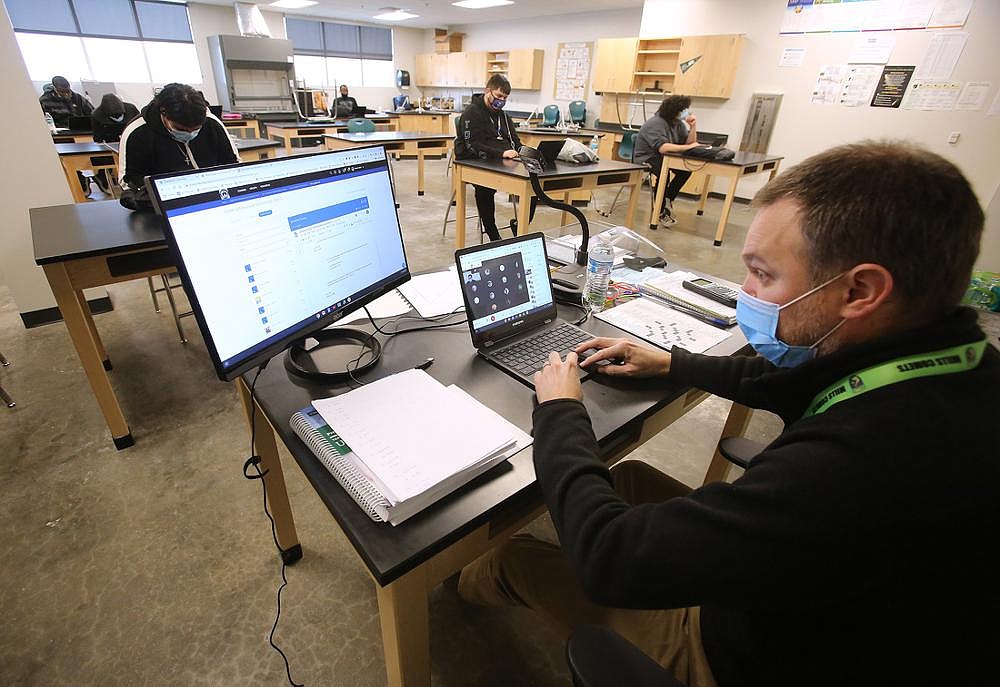

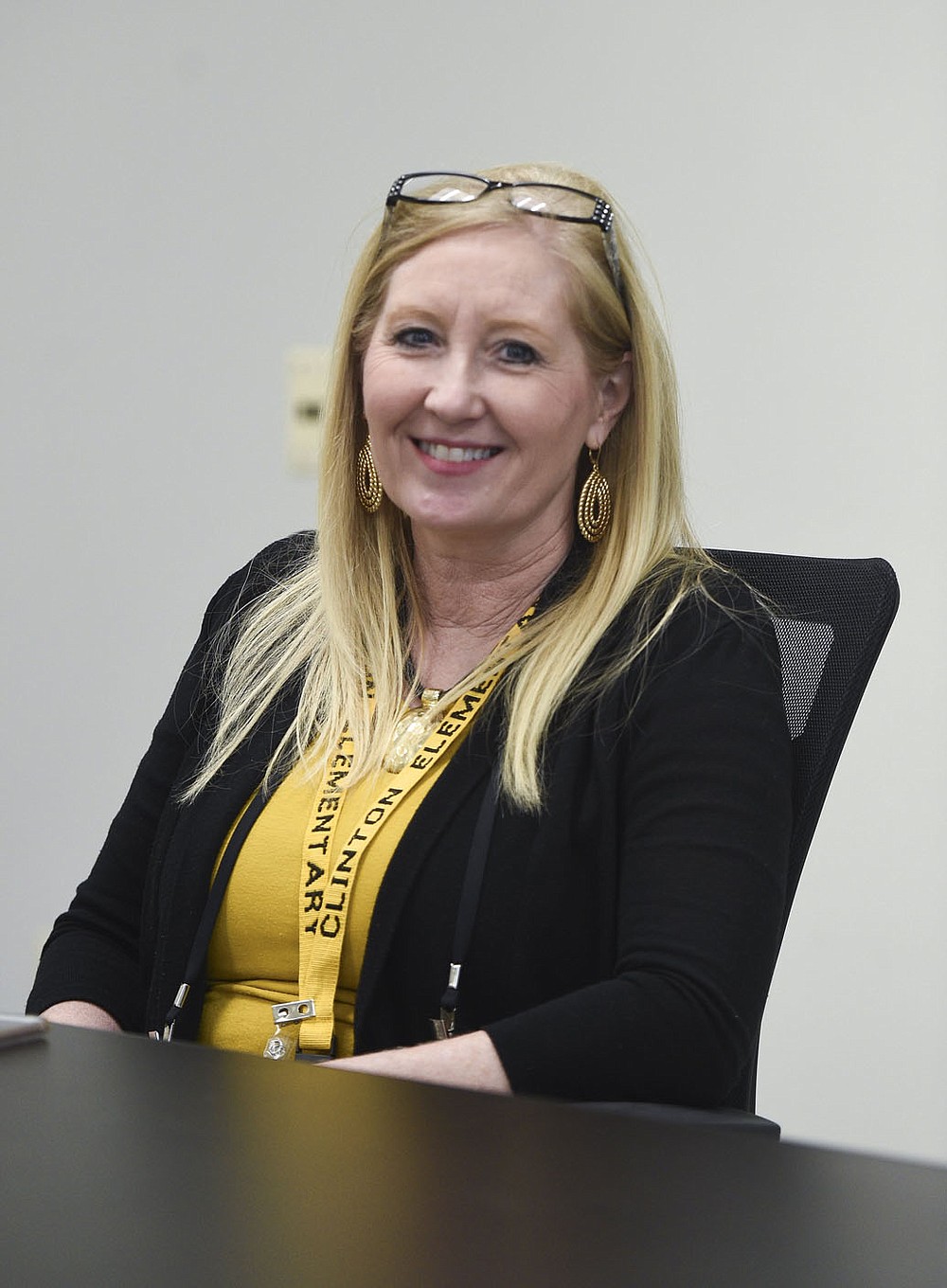
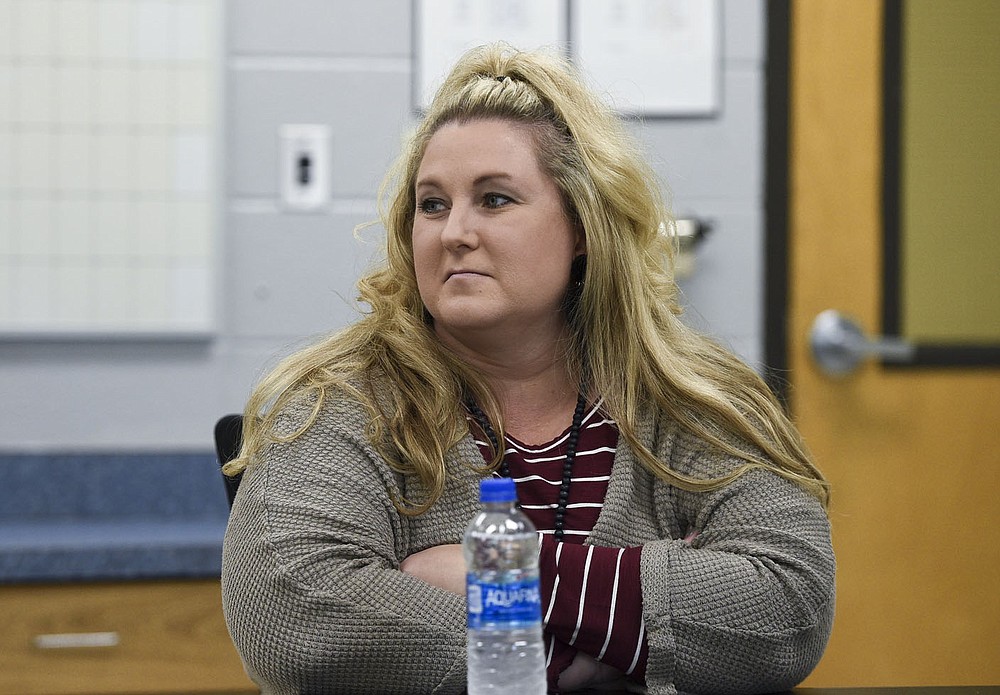
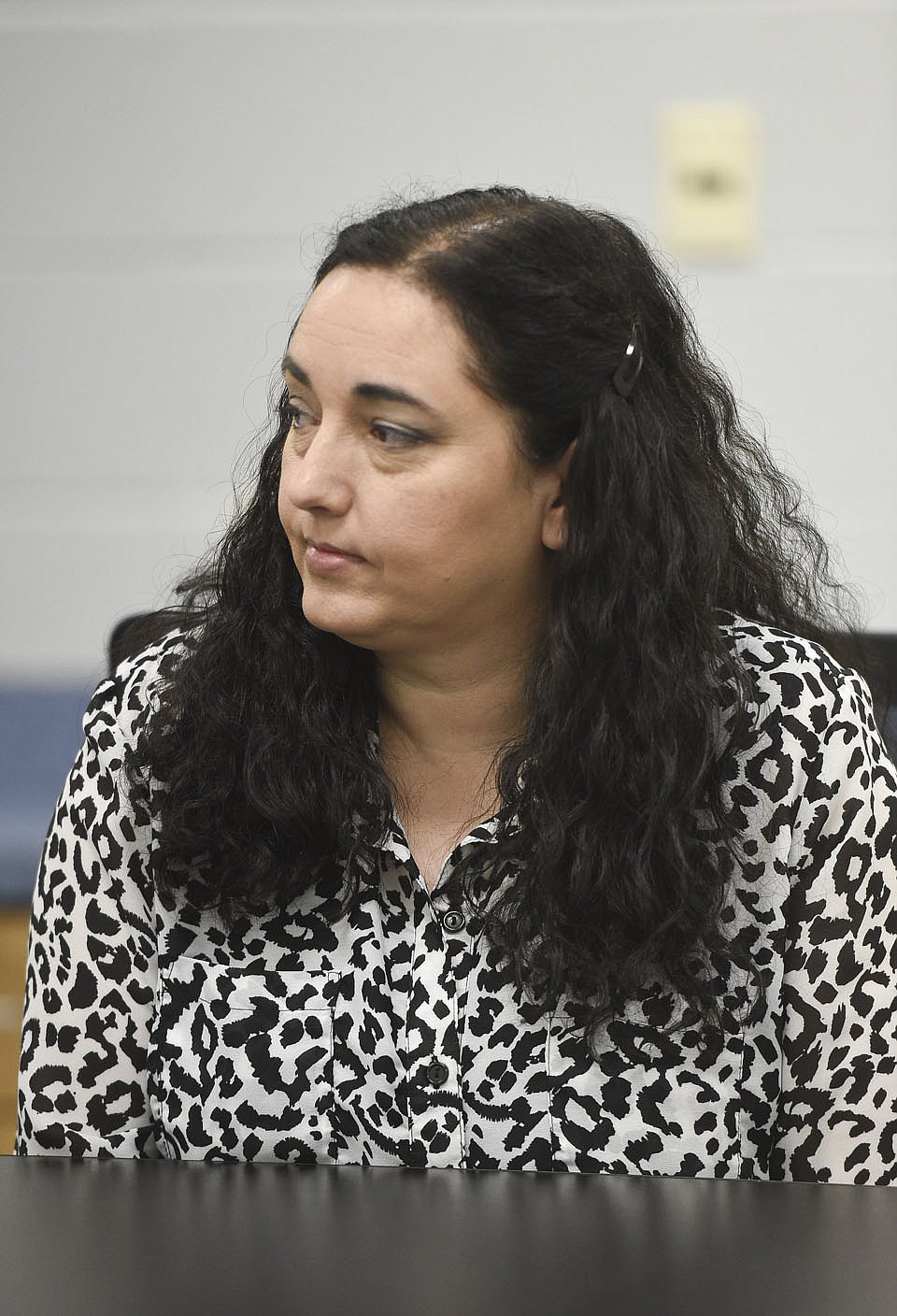
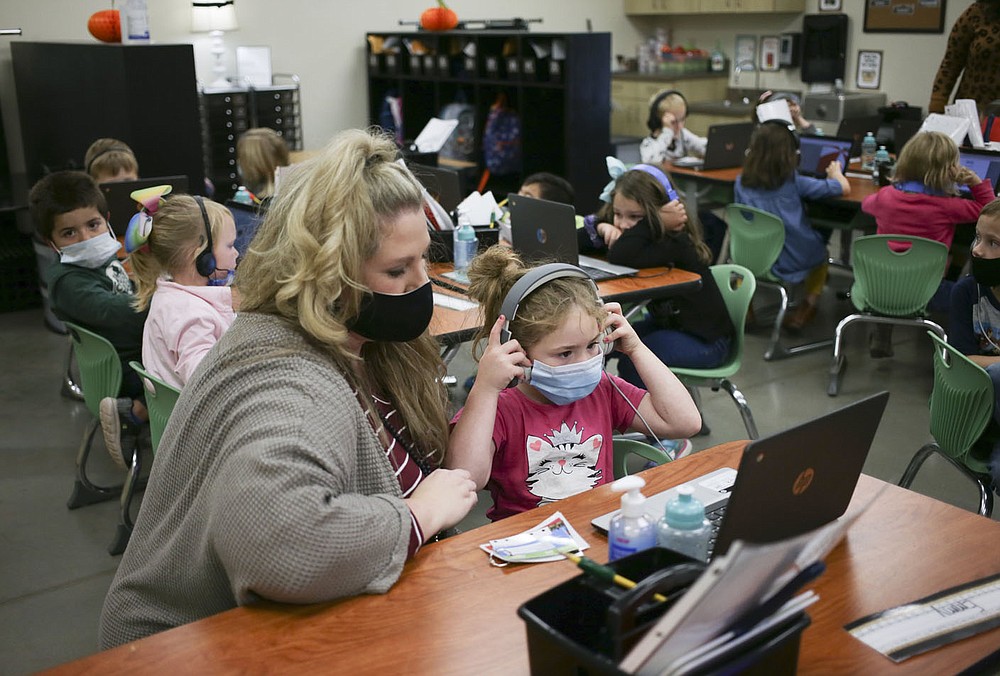
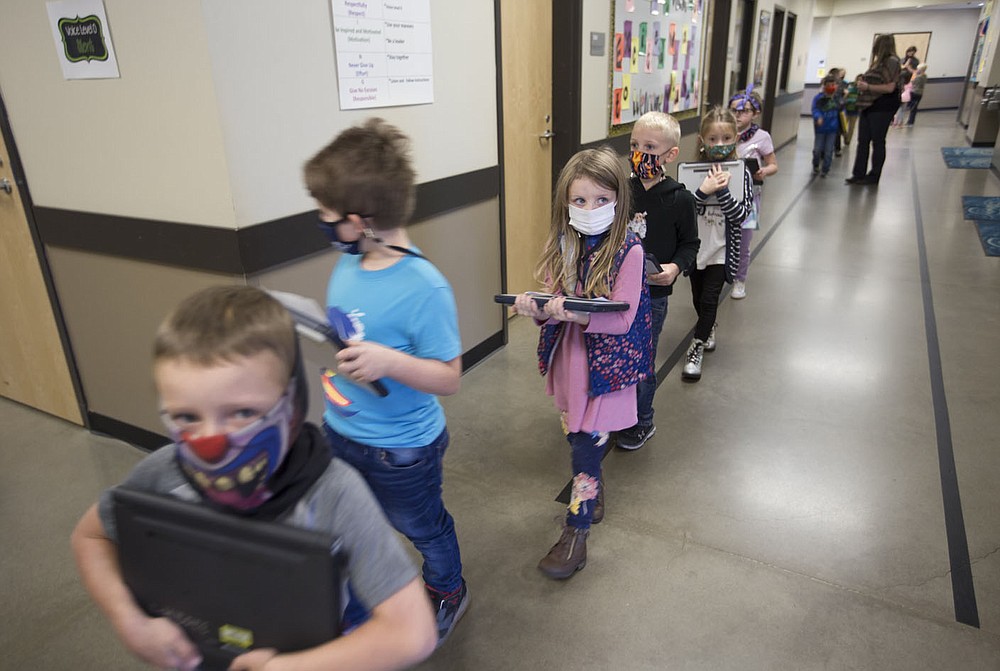
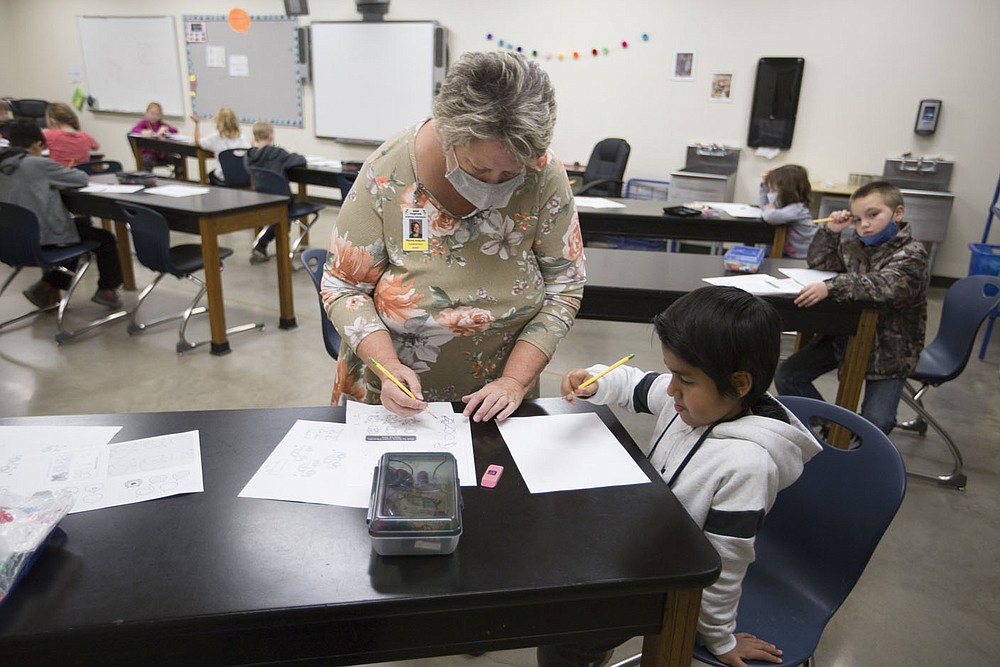
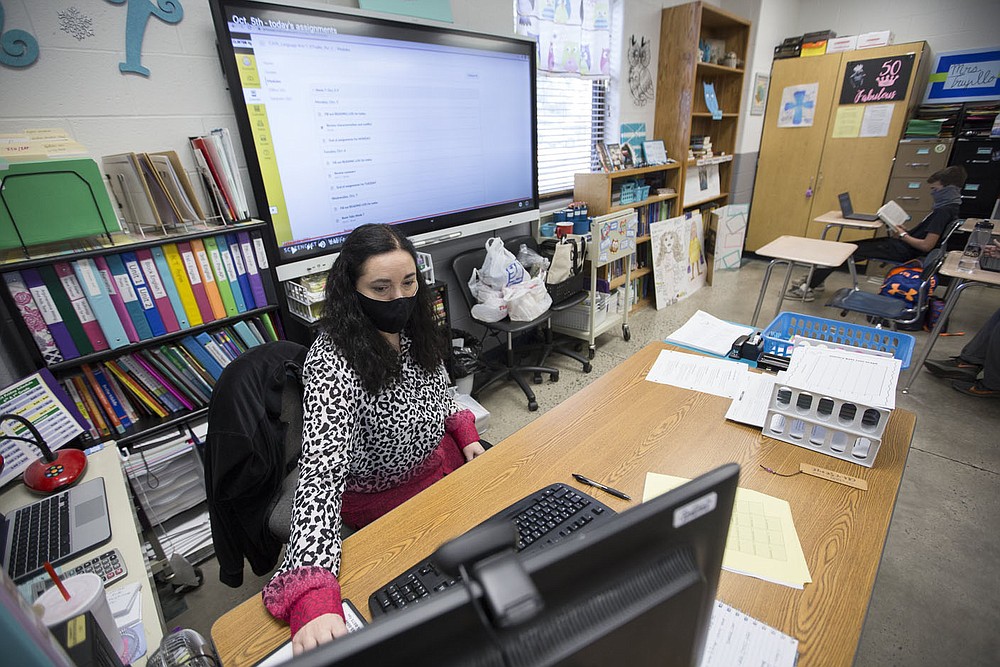
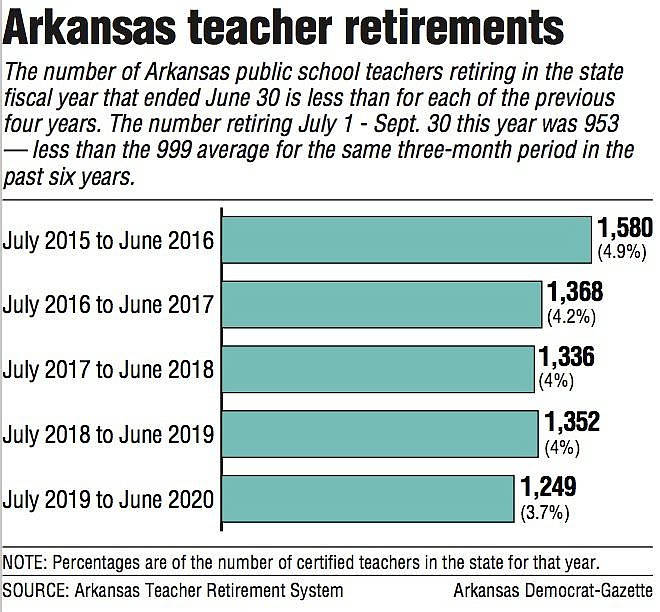
Teacher retention rates in Arkansas have exceeded the national rate for each of the last 10 years. Arkansas has a 92% retention rate after one year of work in the classroom, 75% after five years and about 56% after 10 years.
Nationally, those percentages are 90% after a year, 62% after five years and 46% after 10 years.
Source: Arkansas Department of Education
About ‘Covid Classroom’
“Covid Classroom” is an ongoing series examining the effects of the coronavirus
pandemic on kindergarten- through-12th-grade public education across Arkansas. The project is reported and presented by the news staffs of the Arkansas Democrat-Gazette and the Northwest Arkansas Democrat-Gazette, with the support of the Walton Family Foundation.
The series is produced independently, with no input in the research, writing or editing from the funding organization.
All elements of the project will be available online for nonsubscribers.
“Covid Classroom” is one of several similar projects around the country involving 16 news organizations and 50 newsrooms.
"work" - Google News
October 25, 2020 at 04:36PM
https://ift.tt/3ojKjUR
Teachers' dual roles doubling their work - Arkansas Online
"work" - Google News
https://ift.tt/3bUEaYA
Bagikan Berita Ini














0 Response to "Teachers' dual roles doubling their work - Arkansas Online"
Post a Comment